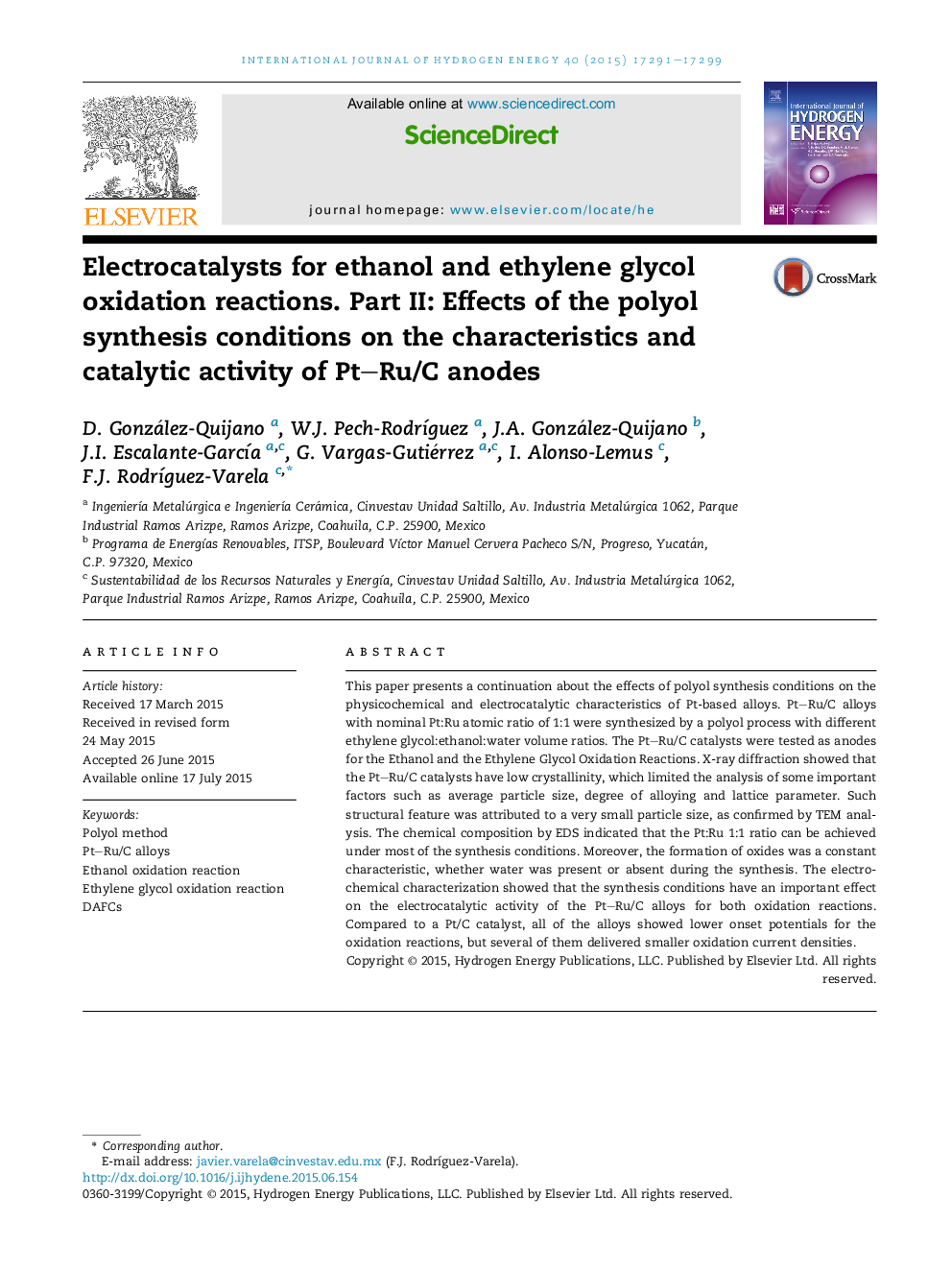| Article ID | Journal | Published Year | Pages | File Type |
|---|---|---|---|---|
| 1269017 | International Journal of Hydrogen Energy | 2015 | 9 Pages |
•Pt–Ru/C catalysts synthesized by a polyol/alcohol/water process.•Formation of oxides regardless of the presence or absence of water during synthesis.•The anodes have been evaluated for the EOR and the EGOR.•The Pt–Ru/C catalysts showed higher catalytic activity than Pt/C.•Higher catalytic activity of Pt–Ru/C alloys synthesized with H2O demonstrated.
This paper presents a continuation about the effects of polyol synthesis conditions on the physicochemical and electrocatalytic characteristics of Pt-based alloys. Pt–Ru/C alloys with nominal Pt:Ru atomic ratio of 1:1 were synthesized by a polyol process with different ethylene glycol:ethanol:water volume ratios. The Pt–Ru/C catalysts were tested as anodes for the Ethanol and the Ethylene Glycol Oxidation Reactions. X-ray diffraction showed that the Pt–Ru/C catalysts have low crystallinity, which limited the analysis of some important factors such as average particle size, degree of alloying and lattice parameter. Such structural feature was attributed to a very small particle size, as confirmed by TEM analysis. The chemical composition by EDS indicated that the Pt:Ru 1:1 ratio can be achieved under most of the synthesis conditions. Moreover, the formation of oxides was a constant characteristic, whether water was present or absent during the synthesis. The electrochemical characterization showed that the synthesis conditions have an important effect on the electrocatalytic activity of the Pt–Ru/C alloys for both oxidation reactions. Compared to a Pt/C catalyst, all of the alloys showed lower onset potentials for the oxidation reactions, but several of them delivered smaller oxidation current densities.
Graphical abstractFigure optionsDownload full-size imageDownload as PowerPoint slide
